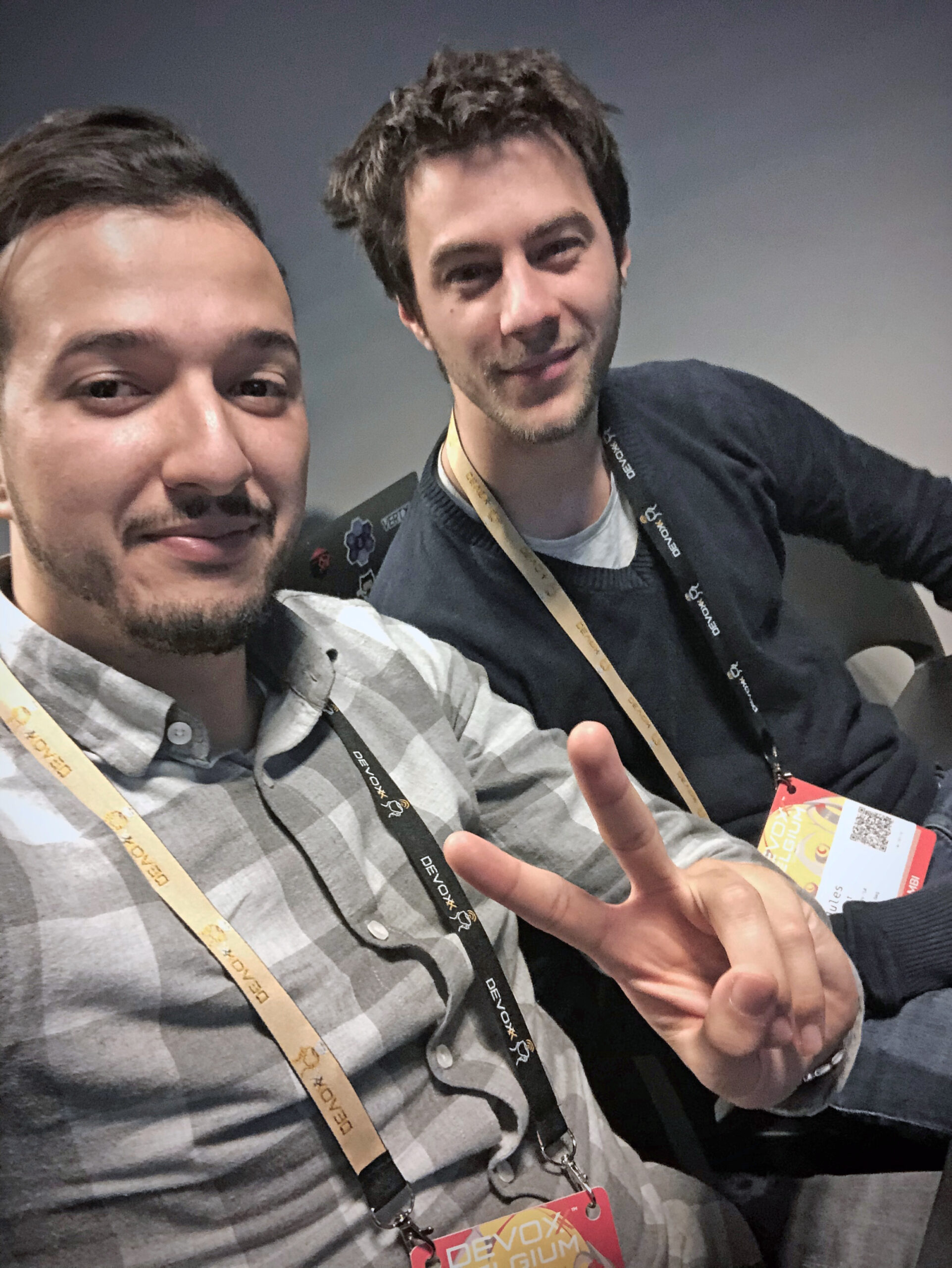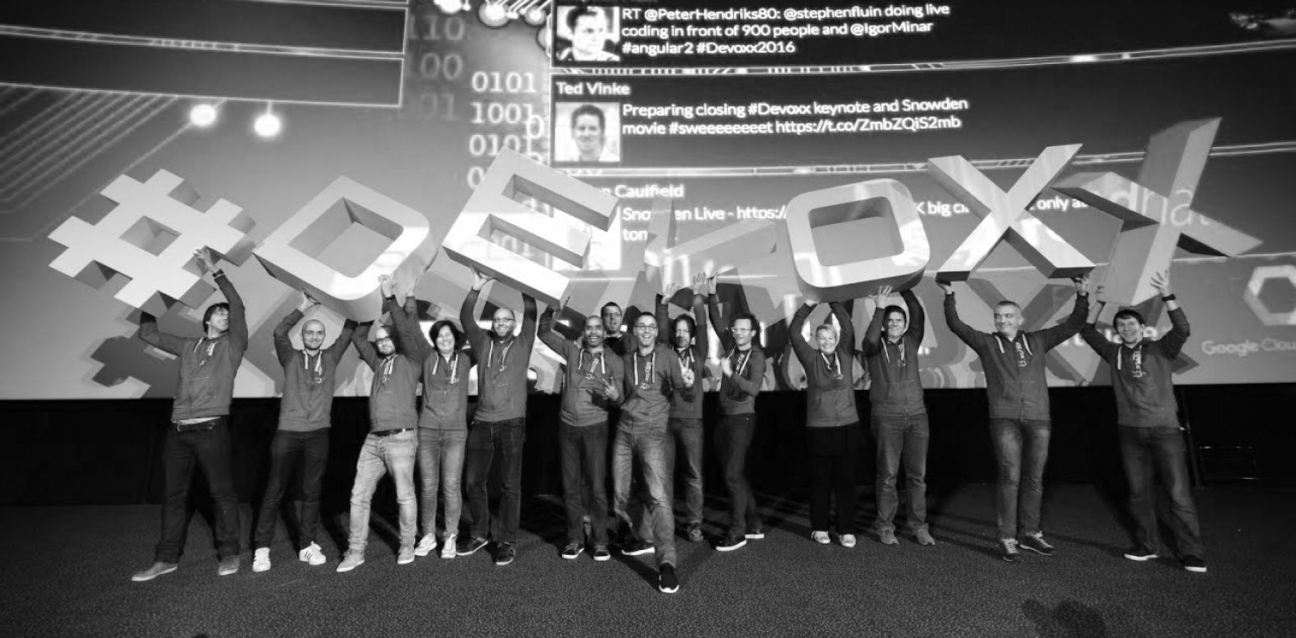 This year we, Process Developer Mohamed Bouali and Case Manager Jules Dupont in Devoteam’s Enterprise Service Excellence practice, had the opportunity to participate in Devoxx Belgium. The 5-day conference is a way for developers and architects to meet & connect and discuss the latest technologies and fascinating innovations. Here you can broaden your knowledge and enhance your skills in Java, Cloud, Big Data, Security, Artificial Intelligence and much more.
This year we, Process Developer Mohamed Bouali and Case Manager Jules Dupont in Devoteam’s Enterprise Service Excellence practice, had the opportunity to participate in Devoxx Belgium. The 5-day conference is a way for developers and architects to meet & connect and discuss the latest technologies and fascinating innovations. Here you can broaden your knowledge and enhance your skills in Java, Cloud, Big Data, Security, Artificial Intelligence and much more.
More than 200 sessions were held including keynotes, ‘Deep Dives’, ‘Tools-in-Action’, ‘Hands-on Labs’, ‘BOF sessions’ and ‘Coding Café’s’. We focused on presentations related to Business Process Automation, Case Management and Process Orchestrations. Next to that, we attended presentations on topics of great interest to us, such as Big Data, Machine Learning, Artificial Intelligence, Cloud services and the latest features in Java.
In the main hall of Devoxx you could find multiple booths with presentations of different technologies. We got the chance to talk to some experts, like the founder of OptaPlanner Geoffrey De Smet.
In the following blog post, we will discuss the most promising technologies that we identified during our visit.
Camunda
We visited Camunda‘s booth at the beginning of the conference. We were informed about its latest news and features. It is a product that we already experimented with as Devoteam recently signed a partnership agreement with the company.
Camunda is an Open Source platform for workflow and decision automation written in Java. The process model consists of structuring and representing the activities of an organisation. A graphical representation is used for the sequence of activities.
The Camunda Platform is a software framework that enables the execution and maintenance of process interaction and communication. The Workflow Engine executes most of the symbols defined in the BPMN 2.0 standard. You can express reliable service orchestration, human task flows, event handling and much more in diagrams that are technically executable and easy for everyone to understand.

The organisation’s main innovation is its orientation to the cloud with Camunda Cloud. It created a new Workflow Engine for microservices Orchestration named Zeebe.
Camunda currently allows designing and implementing Cases with CMMN. But it’s most likely this part will be removed in the future.
Kogito
Kogito is an Open Source solution to handle business automation you can run on a cloud environment. A very exciting solution, as cloud is the future.
Kogito is working along with the Java Framework Quarkus – a Kubernetes Native Java stack tailored for OpenJDK HotSpot and GraalVM – and the set of features provided by Knative – a Kubernetes-based platform to deploy and manage modern serverless workloads – to build and run serverless application on Kubernetes, one of the best container orchestration platforms. These technologies are efficient for fast booting.
During the presentation “Event-driven business automation powered by cloud native Java” we were given a demo of different ways to build an application. We saw that Quarkus with GraalVm – a universal virtual machine for running applications written in JavaScript, Python, Ruby, R, JVM-based languages – is 220 to 270 times faster than a traditional cloud native stack at boot and first response time. Quarkus also provide low RRS memory. Kogito can work with platforms like Kubernetes.
It offers code generation that takes care of lots of tedious work. During the demo we noticed that this feature allows the user to save a great deal of time. One of the most important features is the live reloading, all the changes are immediately taken into account, so you don’t have to restart your server every time you make a code change.
Kogito is an Open Source project licensed under Apache 2.0. It has a very participative community where people contribute and share ideas. For this reason, Kogito will always move forward and be up to date in terms of business automation.
Kogito can work along with GraphQL. This technology proposes an intuitive way to define types to only load the data you need. We had the chance to experiment with this technology in a workshop organised by Red Hat. A GraphQL service is created by defining types and fields on those types, then providing functions for each field on each type.
Apache Kafka
Kafka is often used in a process orchestration. We followed several presentations that refer to this stream-processing software to handle real-time data feeds and event streaming. It’s used as an optimised layer for the management of producer-consumers.

To conclude
Devoxx has been a breath of fresh air in our daily work. It was an opportunity to become up to date in Java and to discover the latest news & trendy products used by the community.
The various workshops organised by for example Red Hat, IBM and Oracle allowed us to take control of new frameworks and technologies. In this way, we moved directly from the theory presented in the conferences to practice. This was the case with Quarkus which was highlighted a lot during the presentations. That is why it seemed logical to participate in the corresponding lab.
In addition, we were able to access different booths, including the one of Devoteam of course. We took up several challenges organised by Devoteam like guessing the exact number of M&M’s in a bowl, which sounds easier than it was.
We discovered a lot of new ways to program and more efficient ways to build solutions. This gave us inspiration and several new ideas we can put in practice at Devoteam, or at least dig into it to maintain a varied knowledge inside our company.
We thank Devoteam for the opportunity to attend Devoxx this year. And we hope to have the experience in the years to come!
P.S. If you’re interested, Devoxx replays are available on YouTube.
